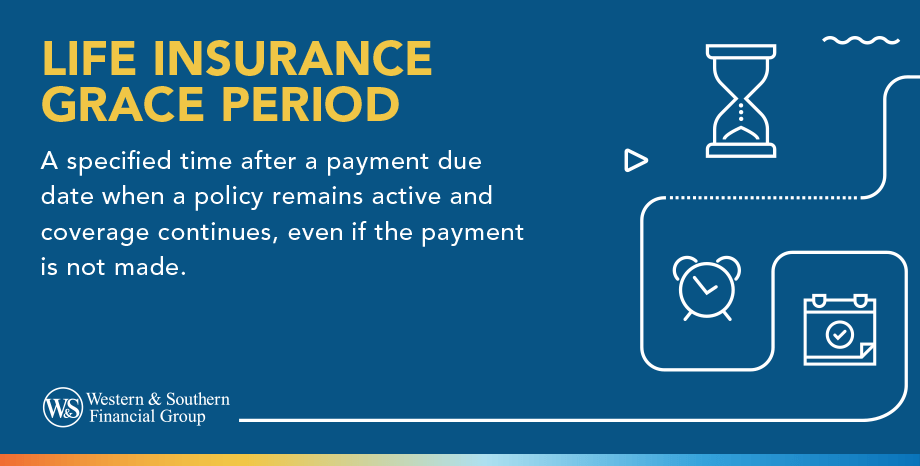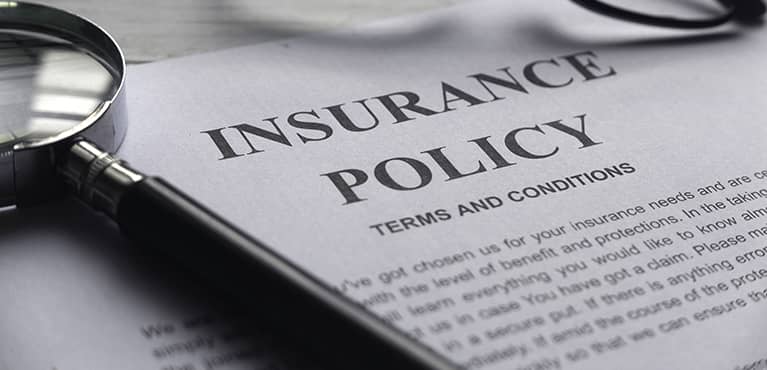
The life insurance grace period allows policyholders 30 days to pay their premium without risking policy cancellation, providing crucial financial flexibility and continued coverage during challenging times.
Updated July 24, 2024
If you miss a premium payment on your life insurance policy, you may worry about what happens next. Will you lose your coverage right away? In most cases, a life insurance grace period helps protect you from a policy lapse. Read on to learn more.
A grace period for life insurance is a window of time after a missed premium payment. During this period, your policy still provides coverage, even though you missed the most recent payment. This helps a policyholder avoid a "lapse" in their coverage. A typical grace period is about 30 days, but some policies may offer shorter or longer windows.
It's important to avoid lapses in life insurance coverage to maintain uninterrupted protection. Should something happen to you after your coverage has lapsed, your insurance won't provide a payout to your beneficiaries. The grace period gives you a chance to continue that coverage and maintain the protection it provides you and your loved ones.
Here's a hypothetical example of a life insurance grace period in action.
Say Kayla's life insurance premium was due September 7, but she missed her payment. She realized her mistake October 14, just over a month past her payment due date. As her policy provides a 60-day grace period, she still has coverage if she suddenly passes away, despite missing her last payment. Kayla pays her premium late in October and owes a small amount of interest on the late payment. Her policy is reinstated without a lapse in coverage.
A life insurance grace period provides a safety net for policyholders. If you miss a payment and die during your policy's grace period, your insurance plan will still provide a payout to your designated beneficiaries, although proceeds typically are reduced by the amount of premium due plus interest.
If you are behind on your premium payments after your policy's grace period has ended, then you'll lose access to your policy's benefits.
When you first miss a life insurance premium payment, you enter into your policy's grace period. It could last anywhere from 30 to 90 days. During the grace period, your plan still provides coverage. Once the grace period ends, if the missing payment has never been made, your life insurance policy will lapse.
When your policy lapses or expires, you no longer have coverage. When you pass away, your beneficiaries won't receive a payout.
Yes, you can pay your premium late. However, you will likely owe interest on the missed payment.
A lapsed policy can be reinstated, but you may face a waiting period, higher premiums or tax implications on certain policies with a cash value. Contact your insurance company for details about how to reinstate your policy.
If you miss a payment, you still have options to maintain your protection. When the policy has lapsed, it can be reinstated either during the grace period or possibly even after it (within limits).
If you are still within your grace period for life insurance, you can simply pay your premium plus any interest or late fees. By doing so you resume your policy coverage.
After your policy has lapsed, you may need to clear additional hurdles to reinstate coverage. This may include providing proof of insurability to your insurance company or possibly undergoing a waiting period.
Your life insurance grace period is an important added protection provided by your policy. It can maintain your coverage for a little longer if you forget to make a payment or fall behind on your premium. To avoid a lapse in your life insurance policy, stick to your planned schedule. Make monthly payments on time or consider making a one-time annual payment to ensure year-round coverage.
Grace periods provide flexibility in managing life insurance payments. Get a Free Life Insurance Quote
Timing is Everything A grace period allows extra time to pay your life insurance premium.








































Information provided is general and educational in nature, and all products or services discussed may not be provided by Western & Southern Financial Group or its member companies (“the Company”). The information is not intended to be, and should not be construed as, legal or tax advice. The Company does not provide legal or tax advice. Laws of a specific state or laws relevant to a particular situation may affect the applicability, accuracy, or completeness of this information. Federal and state laws and regulations are complex and are subject to change. The Company makes no warranties with regard to the information or results obtained by its use. The Company disclaims any liability arising out of your use of, or reliance on, the information. Consult an attorney or tax advisor regarding your specific legal or tax situation.
![]()
Monday - Friday | 8 a.m. - 6 p.m. ET
Saturday | Closed
Sunday | Closed
Holidays | Closed
© 2017-2024 Western & Southern Financial Group, Inc.
Western & Southern is the marketing name for a group of diversified financial services businesses composed of Western & Southern Financial Group and its seven life insurance subsidiaries. Life insurance and annuity products may be issued by The Western and Southern Life Insurance Company, Western-Southern Life Assurance Company, Columbus Life Insurance Company, Integrity Life Insurance Company, The Lafayette Life Insurance Company, National Integrity Life Insurance Company or Gerber Life Insurance Company. Products and services referenced in this website are provided through multiple companies. Each company has financial responsibility only for its own products and services, and is not responsible for the products and services provided by the other companies. Not all products and services are available in all states. All companies are members of Western & Southern Financial Group and are located in Cincinnati, OH with the exception of National Integrity and Gerber Life, which are located in White Plains, NY.
This site is intended to provide a general overview of our products and services. Please review the details of each product with your financial representative to determine which options may best fit your needs.
Western & Southern Financial Group does not provide tax or legal advice. Please contact your tax or legal advisor regarding your situation. The information provided is for educational purposes only.
1 Superior ability to meet ongoing insurance obligations (second highest of 13 ratings; rating held since June 2009 for six out of seven of Western & Southern Financial Group’s life insurance subsidiaries, rating held since February 2024 for Gerber Life). Gerber Life is not rated by other rating agencies.
2 Very strong financial security characteristics (fourth highest of 21 ratings; rating held since August 2018)
3 Very strong capacity to meet policyholder and contract obligations on a timely basis (third highest of 21 ratings; rating held since June 2009)
4 Excellent financial security (fourth highest of 21 ratings; rating held since February 2009)
5 The Comdex Ranking is a composite of all the ratings a company has received from the major rating agencies. It ranks insurers on a scale of 1 to 100 (where 1 is the lowest) in an effort to reduce confusion over ratings because each rating agency uses a different scale.
Financial strength ratings apply to the individual member insurance companies affiliated with Western & Southern. Gerber Life is rated only by A.M. Best. The Lafayette Life Insurance Company is not rated by Moody’s.
This may contain information obtained from third-parties, including ratings from credit ratings agencies such as Standard & Poor’s. Reproduction and distribution of third-party content in any form is prohibited except with the prior written permission of the related third-party. Third-party content providers do not guarantee the accuracy, completeness, timeliness or availability of any information, including ratings, and are not responsible for any errors or omissions (negligent or otherwise), regardless of the cause, or for the results obtained from the use of such content. THIRD-PARTY CONTENT PROVIDERS GIVE NO EXPRESS OR IMPLIED WARRANTIES, INCLUDING, BUT NOT LIMITED TO, ANY WARRANTIES OF MERCHANTABILITY OR FITNESS FOR A PARTICULAR PURPOSE OR USE. THIRD-PARTY CONTENT PROVIDERS SHALL NOT BE LIABLE FOR ANY DIRECT, INDIRECT, INCIDENTAL, EXEMPLARY, COMPENSATORY, PUNITIVE, SPECIAL OR CONSEQUENTIAL DAMAGES, COSTS, EXPENSES, LEGAL FEES OR LOSSES (INCLUDING LOST INCOME OR PROFITS AND OPPORTUNITY COSTS OR LOSSES CAUSED BY NEGLIGENCE) IN CONNECTION WITH ANY USE OF THEIR CONTENT, INCLUDING RATINGS. Credit ratings are statements of opinions and are not statements of fact or recommendations to purchase, hold or sell securities. They do not address the suitability of securities or the suitability of securities for investment purposes, and should not be relied on as investment advice. Ratings are subject to change from time to time. The ratings shown here are correct as of February 20, 2024.
Gerber Life Insurance is a trademark. Used under license from Société des Produits Nestlé S.A. and Gerber Products Company.